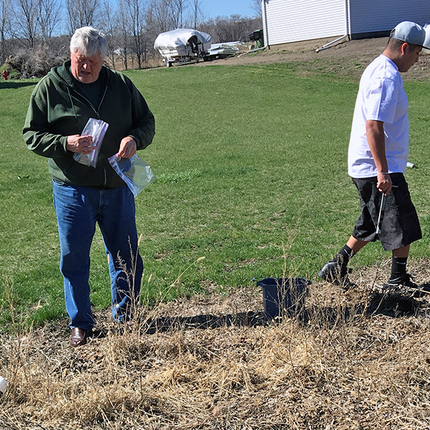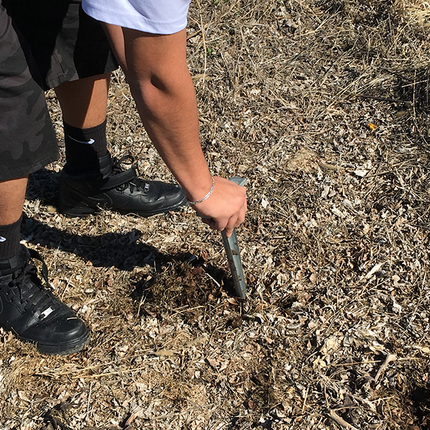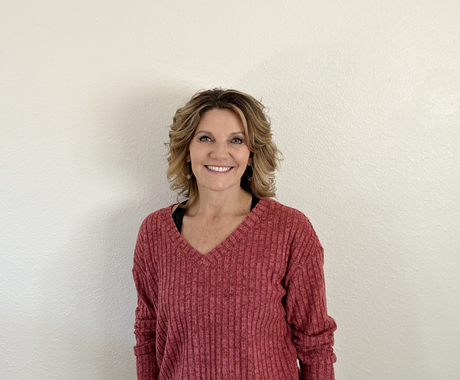By April Goettle, former staff member
With the help of a grant from the Nebraska Academy of Sciences, students from Nebraska Indian Community College (NICC) and staff from the Center for Rural Affairs conducted soil testing on gardens throughout the Santee community.
Samples were taken from 10 different locations, including the demonstration garden located on the NICC campus. Samples were sent to the University of Massachusetts (UMASS) Extension Soil and Plant Nutrient Testing Laboratory in Amherst, Massachusetts.
Results showed that all locations tested above optimum for potassium, calcium, and magnesium levels, with a few locations testing at optimum levels for phosphorus. Santee’s proximity to the Missouri River and Lewis and Clark Lake makes the results understandable.
A couple of tested locations in Santee were lacking organic matter. These sites were near recent housing construction, where construction crews have removed the topsoil.
Soil testing can seem like a challenging task for the beginning gardener, however, it is a very easy and inexpensive tool for increasing garden productivity. UMASS is just one of the labs that offers mail-in soil testing, with easy-to-follow instructions available online. Instructions include how and where to take the sample, based on the size of the garden. The website also describes how to prepare the soil before mailing it in. The cost for a standard soil test is $15. Results are received via email within a few weeks in an easy-to-understand format. This time frame allows gardeners plenty of time to take a soil sample early in the year, get results, and add amendments, such as minerals or organic matter, before the planting season begins.
Results were discussed during a beginning gardening workshop held at the NICC demonstration garden in May. Soil test reports were mailed to all participants. The Center and NICC will offer a follow-up workshop in the fall to discuss ways to maintain these positive soil test results. Topics will include replenishing nutrients through composting and increasing phosphorus levels — including using traditional applications such as fish bone meal, studying organic matter levels, and increasing organic matter levels during fallow months.
Soil testing is a part of the Community Foods Project, a collaboration between the Center and NICC on the Santee Reservation in Nebraska. The program includes a farmers market, fresh food basket program, demonstration garden and workshops, and a garden advising program.
If you are interested in soil testing for your garden, visit the UMASS website.
Photos: Soil samples were taken from several sites in Santee this spring. Results showed the soil has above optimum levels of potassium, calcium, and magnesium.






